HyperOS or One UI 6.1 is the best customized Android version available today
Xiaomi's HyperOS and Samsung's One UI are both based on Android, but they differ greatly in design, customization, and AI features.
Let's compare HyperOS and One UI 6.1, Samsung's latest custom interface version, to see what's different between the two popular Android custom interfaces today.
1. Lock screen
Both HyperOS and One UI 6.1 offer multiple lock screen options.

HyperOS has many lock screen layouts and added depth effects for users to choose from.

One UI 6.1 allows users to add more widgets to the lock screen. With the Galaxy S2 series, One UI 6.1 also allows displaying wallpaper on the screen with Always on Display.
2. Home screen

Compared to HyperOS, One UI 6.1 offers more home screen widgets, giving users more options to customize the home screen. To save space and make access easier, users can even stack multiple widgets, similar to the iPhone.
OneUI 6.1 also allows users to change the background color of application folders to quickly identify them.
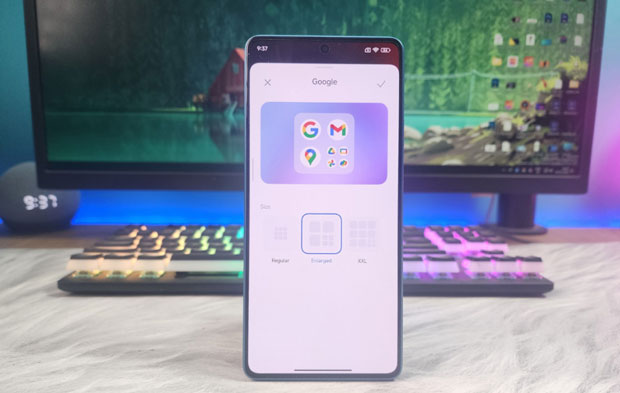
HyperOS gives you many ways to organize apps in folders, a useful feature for users with multiple apps on their home screen.
3. Control center
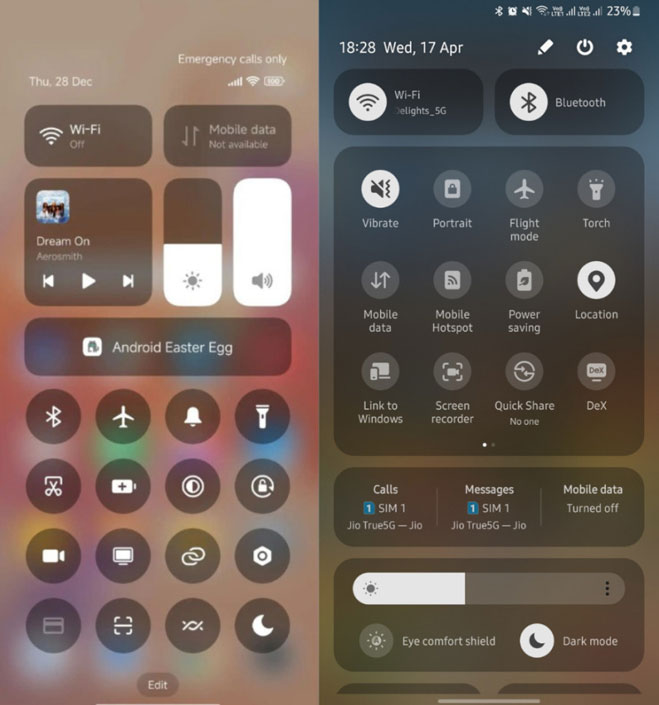
HyperOS has a control center with large toggles for Wi-Fi and mobile data at the top, inspired by iOS. The brightness and volume sliders are also designed to be very large so they can be identified quickly.
One UI 6.1 divides the control center into several areas with two large shortcuts at the top and the bottom containing most of the shortcuts.
4. Customization
In terms of customization, One UI 6.1 offers several advantages over HyperOS such as color palette options that refresh the entire experience.
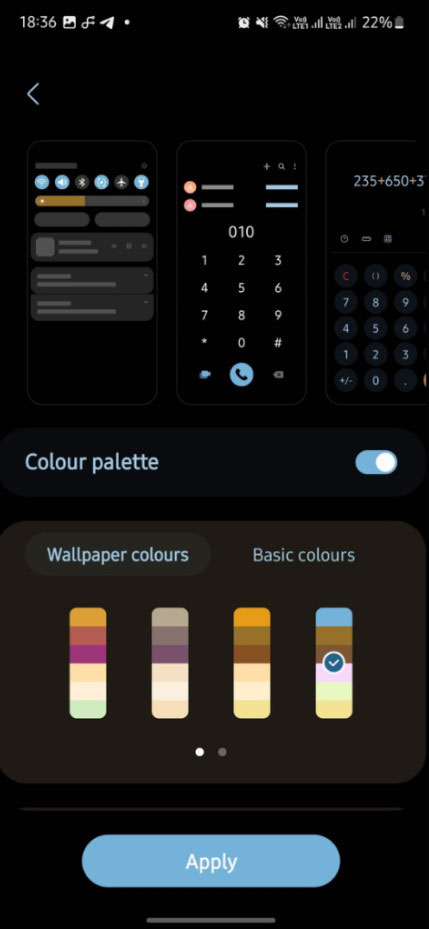
There are more Always on Display and home screen customizations for users to choose from such as 'Modes and Routines' to enable/disable selected features at a specific time or location.
5. Performance
Both HyperOS and One UI 6.1 offer an enjoyable experience, although HyperOS has a slight advantage over One UI.
6. AI features
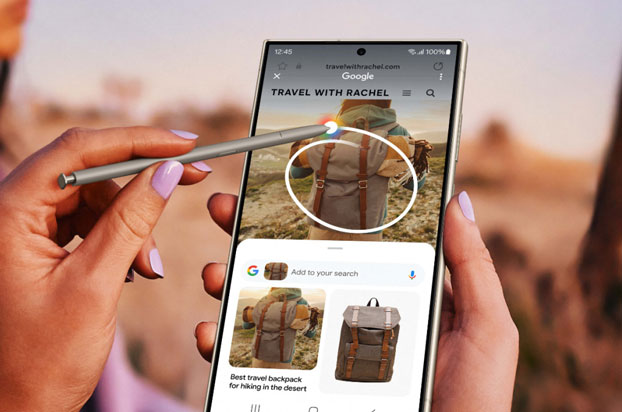
One UI 6.1 offers many AI features, some of which can save you a lot of time.
As for HyperOS, only some AI features appear in the Photos application.
7. Dynamic Notch
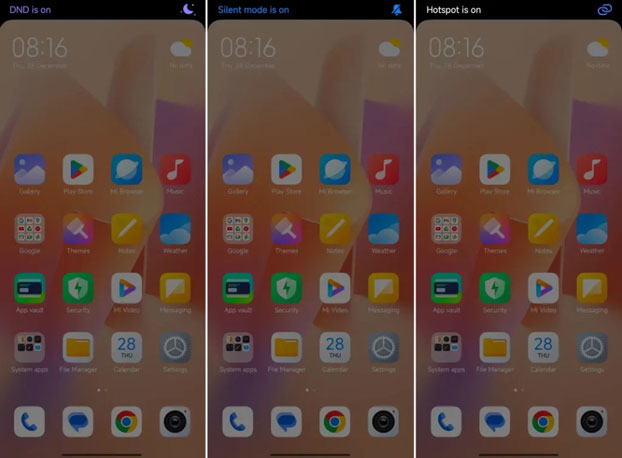
The Dynamic Notch feature in HyperOS, works when you connect a charger, turn on battery saver, turn on do not disturb, switch to silent mode, and turn on hotspot.
Dynamic Notch in HyperOS only works with a few actions but provides an interesting visual element that is needed, something One UI cannot yet do.
HyperOS or One UI: Which is better?
Depending on your needs and priorities, choose HyperOS or One UI.
HyperOS offers a minimalist experience with better lock screen customization and integration with Xiaomi products.
One UI 6.1 offers more customizations, widgets, better AI features, and better integration with Windows.
You should read it
- How to install HAGO on computers and laptops
- Unique new rockets can enter space in just 5 minutes
- Scientists identified 17 new genetic markers related to longevity
- MS Word: Print Word-attached document - background color
- Invite 2 terrible games PUBG and PES 2019, are free for Xbox One on Microsoft Store
- Tips for using Android phones to replace Microphones for computers
- ThinkPad Edge E430 starts Windows 7 40% faster
- How to change time, date and month in Windows 10?
May be interested
- 12 reasons to install custom Android ROMs
 the first android smartphone has many problems. instead of waiting for the manufacturer to fix them, volunteer developers created custom roms to replace the default software on the phone.
the first android smartphone has many problems. instead of waiting for the manufacturer to fix them, volunteer developers created custom roms to replace the default software on the phone. - Android 5.0.1 encountered an error 'RAM'
 android 5.0.1 is the latest version released by google. however, according to programmers' feedback, this version is experiencing ram-guzzling errors when running the software.
android 5.0.1 is the latest version released by google. however, according to programmers' feedback, this version is experiencing ram-guzzling errors when running the software. - Android Q is rooted, though not yet released
 so far, google has not even announced the new version, only a beta of android q for the pixel 3 xl has been leaked online in mid-january 2019. yet, a programmer recently announced that he has successfully rooted android q.
so far, google has not even announced the new version, only a beta of android q for the pixel 3 xl has been leaked online in mid-january 2019. yet, a programmer recently announced that he has successfully rooted android q. - Google requires developers to create a 64-bit version for Android apps before 1/8/2019
 before august 1, 2019, all applications using the original code must provide a 64-bit version in addition to the 32-bit version in order to release the update.
before august 1, 2019, all applications using the original code must provide a 64-bit version in addition to the 32-bit version in order to release the update. - Android SDK - Download Latest Android SDK
 android sdk is a free and specialized programming language that allows you to create android applications.
android sdk is a free and specialized programming language that allows you to create android applications. - What's new in Android P 9.0?
 google has just released a trial version of the latest android p 9.0 operating system for developers, the final version will be available for android devices in the near future.
google has just released a trial version of the latest android p 9.0 operating system for developers, the final version will be available for android devices in the near future. - Android App Version Checks
 checking the application version on android will help you know if you need to upgrade the application or not, when tracking information about the new version of the application.
checking the application version on android will help you know if you need to upgrade the application or not, when tracking information about the new version of the application. - How much Ram is enough with an Android smartphone?
 oppo's find x version is supposed to be equipped with 10gb of ram, even surpassing the ram of a conventional computer today. 10gb does the ram have too much and how much is enough for a smartphone?
oppo's find x version is supposed to be equipped with 10gb of ram, even surpassing the ram of a conventional computer today. 10gb does the ram have too much and how much is enough for a smartphone? - Run Google Android on your computer
 would you like to try the latest version of android os from google without buying a phone? the following article will help you fulfill this desire with the android sdk simulation version.
would you like to try the latest version of android os from google without buying a phone? the following article will help you fulfill this desire with the android sdk simulation version. - How to download the old version of Android application and block automatic update
 how to return to the old version of the android application? using the old version may be more suitable for you than upgrading to a new version of the application.
how to return to the old version of the android application? using the old version may be more suitable for you than upgrading to a new version of the application.










 Tanks also have silencers, but that's very strange
Tanks also have silencers, but that's very strange 3 reasons you need AI photo editing app Luminar Neo
3 reasons you need AI photo editing app Luminar Neo Samsung announced the new LPDDR5X memory chip with extremely fast speed and excellent energy saving capabilities
Samsung announced the new LPDDR5X memory chip with extremely fast speed and excellent energy saving capabilities Lenovo launched the Xiaoxin Pro 16 2024 laptop
Lenovo launched the Xiaoxin Pro 16 2024 laptop How to change Reddit username
How to change Reddit username Perspective of Earth and humanity in 2050
Perspective of Earth and humanity in 2050